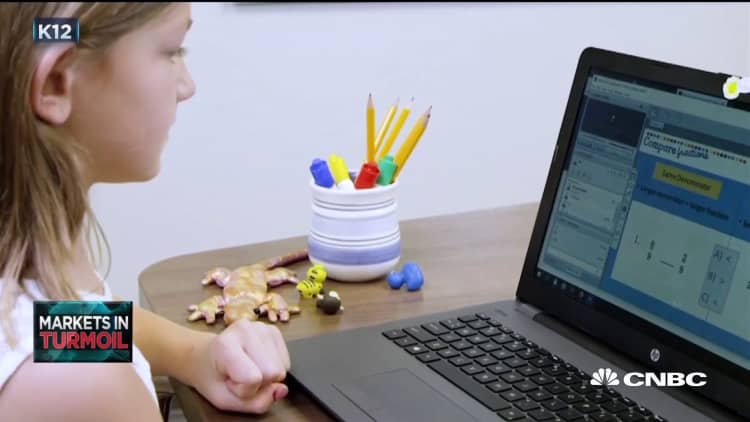
The buildings may be empty, yet class is in session for students and teachers at Northshore School District.
Located in the Seattle suburbs, not far from the epicenter of Washington state's outbreak of coronavirus, or COVID-19, the district was forced to close two schools for sanitizing after two employees reported being exposed to someone who had potentially contracted the disease.
In a letter to parents last week, Northshore announced it had made the decision to shutter all its facilities for up to two weeks and move instruction for its more than 23,000 students online.
They are expected to login using a district Gmail account to access assignments and receive information about teacher office hours. Parents are being encouraged to create a daily schedule and watch videos using Zoom that have been posted to the district's online learning site for support. The move from classroom to cloud-based learning is one Northshore had been preparing for long before coronavirus hit the region.
More from Personal Finance
What you need to know about coronavirus and health insurance
How to build a cash reserve if coronavirus has you miss work
Here's how to reduce the taxes on your Social Security benefits
So far, it appears to be the exception, not the rule.
"The number of districts who have capacity to do that is about 20% to 30%," said Dan Domenech, executive director of the American Association of School Administrators, adding that the estimate is optimistic at best.
As COVID-19 spreads to new areas of the country, educators are faced with a race against time to come up with contingency plans that would allow learning to continue should schools close. There's also the issue of student services, especially providing nutrition. Thirty million children receive free or reduced lunches on a daily basis at schools across the country, according government data.
Northshore says it is providing meals for pickup at 22 school sites while its online learning program is in place.
Virtual learning has emerged as an early answer, however many districts lack the technology, teacher training and, in some cases, broadband internet access to deliver those lessons.
Some are preemptively shutting down for a day or more to allow teachers time to prepare physical packets to be sent home with students, said Domenech, whose organization is coordinating with the CDC and districts across the country on their response to the coronavirus.
Others are looking for turnkey services like the ones provided by the online education company, K12, which licenses content to public schools.
The firm, which already serves several hundred thousand students, is seeing a spike in inquiries from districts and parents on how to create online curriculum.
"It's actually pretty easy to set up if a district wants to do this," said Nate Davis, K12's chief executive. Depending on how many subjects and the number of students, the program could be ready in days, he said.
Whether administered by the school or a private company, online lessons are only effective if you can access them. According to the most recent government data only 61% of children ages 3 to 18 had internet access at home.
We do have a wealth of digital tools for learning, collaborating and communicating, but if teachers and students don't have access, their value is useless.Jessica Brogleyteaches education technology at the University of Wisconsin-Platteville
"In our rural communities, decent internet isn't always an option," said Jessica Brogley, who teaches education technology at the University of Wisconsin-Platteville. "We do have a wealth of digital tools for learning, collaborating and communicating, but if teachers and students don't have access, their value is useless."
While cell phones, tablets and gaming systems have created a generation of tech-savvy kids accustomed to using online platforms for learning within their classrooms, it's unclear how effective cloud-based learning can be for younger students and those with special needs, who often interact with technology with the help of an aide or teacher.
"The independence, that's tough," said Brogley. A simple change in schedule from a structured setting may be difficult for children who lack the maturity or drive to learn mostly on their own, she added.
"It's a lot to ask of kids, honestly."


